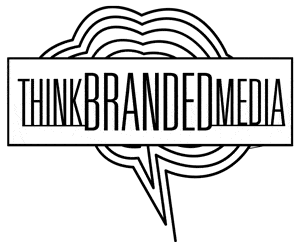Best Colors & Patterns To Make Your Photos & Videos Pop
Many video production companies agree, getting great looking photos and videos requires more than just the gear and software. It takes a good eye and forethought as to the location, the background, and the colors. Having a perfectly exposed photo or video doesn’t mean it’s a good one if the subject is drab or you have clashing colors and patterns that distract the eye.
In this article, we look at which colors and patterns go well together to make your photos and videos look great.
About Color Theory
If you’ve had any art training, you’ve heard about color theory. If not, here’s a breakdown. Color theory is the term that describes guidelines used when composing art and designs. Our modern color theory derives much of its basis on Isaac Newton’s color wheel which shows primary colors (red, blue, and yellow), the secondary colors (purple, green, orange) which are made by mixing primary colors, and tertiary colors (red-orange, yellow-orange, yellow-green, blue-green, blue-violet, and red-violet) which are produced by mixing primary and secondary colors. Color theory also breaks colors into two categories – warm and cool; red, orange and yellow being warm colors, while blues, purples, and greens are cool colors.
Color theory also suggests that one can create designs pleasing to the eye by using complementary colors or colors are opposite one another on the color wheel. For example, look at advertising and see how many companies use the combination of orange and blue or green and red in their packaging. They do this because these complementary colors grab the eye.
Besides using complementary colors, a photographer or artist can opt for triadic colors. Triadic colors are three colors spaced evenly opposite on the color wheel, such as red, blue, and yellow.
Colors in Photography and Videos
Now that you have a basic understanding of color theory, it’s time to apply that to your photos and videos. If you’re ever at a loss for how to make your photos and videos look better, start with the color wheel and see which complementary colors you can use when you’re building a sceneA continuous block of storytelling either set in a single location or following a particular charact.... Maybe for outdoor shots when you’re shooting against a bright blue sky, you have your model wear something orange. Alternatively, if you’re shooting against emerald green grass, you incorporate something red. Also, using triadic colors is a great way to bring harmony to your artwork.
Using Color to Appeal to Emotions
We’ve found that color can directly affect our mood and people associate color with certain feelings and emotions. Color is a powerful tool you can use to tell a story with your art and to make your viewers feel something while looking at your work. Here, color temperature plays a crucial role in evoking emotions. For example, red signifies love, passion, and anger. You’ve all heard the term ‘seeing red’ to describe someone who’s filled with rage. By contrastThe difference in luminance or color that makes an object distinguishable. In visual terms, high con..., green and blues suggest calm, serenity, sadness, or cold. We often associate purples with spirituality and royalty. So it’s a good idea to study color and how colors affect our emotions and suggest feelings to boost the impact of your photography and video. For example, imagine you’re making a video about someone sad. Well, you can show that by having your character crying, which is fine, but to make the shot more impactful, you can photograph this against a background of cold colors like muted blues and grays to give more weight to the situation. If you want your viewers to feel happy and warm, you can use warm colors such as yellows and oranges to evoke those feelings.
What About Patterns?
Now you know a little about how color can be used to your advantage to make better photos and videos, let’s look at patterns. Like color, you have to be aware of trends if you want to make good looking photographs and videos.
Clothing patterns can cause significant problems in photography if you’re not careful. For example, have you ever watched something on live TV where someone is wearing high contrast pinstripes and notices how distracting the morié effect is?
Of course, you can use patterns to your advantage too, just like color. Using repetitive patterns in your photos and videos can give the viewer a sense of something larger than life, especially when it fills the frame. Also, patterns don’t have to be objects either. They can be textures such as the textures found in bricks or leaves.
You can create striking visuals if you place two contrasting patterns together such as rigid stripes and wavy lines. You can also achieve exciting results if you creatively break patterns. Imagine a photo with 100 white eggs, all the same color, and size with one broken and how much contrast the broken shell and yellow yolk provides.
The trick with patterns is to get out and train yourself to see those things you overlook every day. Be observant wherever you are and look for patterns because they’re everywhere. Also, you can combine patterns with color to evoke emotion too. A pattern of steel razor wire can evoke fear, while patterns of undulating blue waves can evoke feelings of calm.
Change Your Angles
To get the most dramatic effect when shooting video or photos using colors and patterns, consider your angle and try not shooting everything at eye level. If you get down or get up, you can dramatically change not only the perspective but the overall tone of the photo as well.
Remember, shooting great photos and videos has less to do with the equipment and software, and more to do with your creative vision. Great photos and videos have been made with a humble smartphone, so before you rush off and buy the most expensive camera, study color and pattern and learn how to put together a scene that will get an emotional reaction from your viewer for more powerful images.

